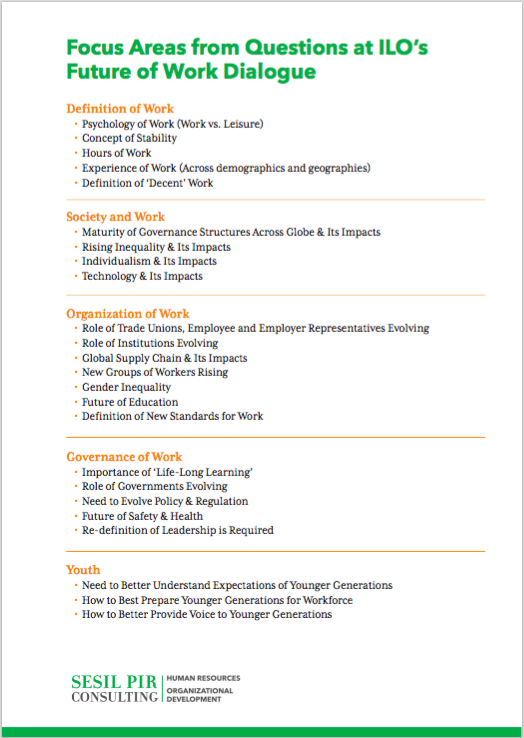HR Management
Nº 111
Are Women and Men Equals in the Workplace?
By Fateme Banishoeib
No conversation about male/female equality can begin without first acknowledging the reality of ‘implicit bias.’ Let me share a personal story from a few years ago, which will help you understand what the role of implicit bias plays in our personal definition of equality. I was at the lead of a department in a global company based in the United States. I had just been appointed, and was ready to bring my excitement to every event I attended, especially to those organised by the company-dedicated group for women leaders. Their mission was to focus on strategies to advance women in leadership roles.
As a woman leader, it was my responsibility to create a change and foster an environment open for that change to happen. I worked on a proposal to portray women in leadership positions, to applaud them and, above all, to build a movement that valued the feminine traits in leadership. The goal was to shift perception and dialogue around how a woman is supposed to show up as a leader. A desire for authentic and inclusive leadership. I talked with various people and connected volunteers, supporters, and sponsors.
The day I would unveil the campaign had arrived. I entered the meeting room; the women-dedicated group panel was already there. I shook hands with everyone, connected my computer, and started my presentation with a background of photos I had taken of women leaders in the organization. The pictures portrayed them in their roles and work environment highlighting the traits they, themselves, considered as feminine and wanted to show more in the work they did.
As soon as I mentioned the word “feminine” and the need to show up in leadership with feminine traits, I noticed awkward movements of my audience and faces turning away. All signs of discomfort. I paused and asked if there were any questions. The leader of the group told me:
“You cannot mention the word feminine in public. We do not want you to take pictures of women portraying feminine traits of leadership. Maybe you could take pictures of them with their families.”
For months, I double guessed my judgement and thought maybe they were right and the word “feminine” wasn’t that important overall – the habit of questioning ourselves as women working in a male dominated environment – until one day I realised what this was all about: implicit bias and the need to see or identify with “feminine” only when it is reassuring, comforting, and not threatening. This example wasn’t only my personal perception, or an isolated case. There was a real closure towards feminine – a closure for which not only men are to be blamed.
I see similar reactions and patterns when reading articles on women in the business world, I often find myself (after the initial excitement vanishes) concerned about implicit bias.
I see a peculiar choice of words which gives me the impression that those women in the headlines are the passive receivers rather than the active authors of their career. Almost like an object which is made powerful by somebody else.
I think this is the result of the implicit bias we all carry. Yes, me included, and you who are reading, too. One of the main roadblocks to equality is implicit bias which, if not addressed, will continue to drive the way we do business and politics, and live our lives. The perfect example is a certain cultural bias that sees women as not eligible to take the power unless it is given to them. Unless somebody makes them powerful.
While equality is big among corporations and governments, there are still double standards aimed at women that are hard to get rid of, as they are part of our heritage and culture. I am sure that when asked, the vast majority of people believe women and men are equally capable of serving as top corporate leaders. Yet, we have to acknowledge that when male CEOs talk, it’s fair to say no one’s thinking instead about what he’s wearing.
There are studies which prove that the small number of female CEOs is due to the fact that women are held to higher standards than their male counterparts. Similarly, other research finds that female CEOs are far more likely to be pressured and second-guessed by shareholders than men occupying the same leadership position. Even today, after all the equal opportunity laws, professional women too often have to bring much more to the table than a man to get a job, higher pay, or simply recognition for achievements. Men and women may believe female leaders are just as qualified as their male peers, but certain stigmas persist. One of the reasons is that unconsciously we do not associate the word “leader” and its traits with “female.” Our bias sees female leaders as abnormal, and therefore they face more resistance than men in leadership roles. Assertive women are punished for being unfeminine; women who conform to stereotypes are deemed too meek for top jobs. We must admit our own expression of discomfort with women in positions of power to get past it. If you are now telling yourself that you have no discomfort or bias, let’s all do a quick test together. Close your eyes and picture a CEO. Is that person wearing a suit or a dress? Chances are, you’re not picturing a lady.
There is a current predominant focus on the numbers, on the “how many” women, nationalities, age representations, you name it, rather than on inclusion. It has become a battle of numbers that in my view will increase the gap as it does not address the real issue: lack of inclusion.
We have the responsibility to acknowledge and discover our own biases, and call each other out if we want to become more inclusive. Inclusion must be an intentional choice.
We, as women, do play a crucial role in it. The real questions to be asked are about a system and a model that is not inclusive. How did we fall into the trap of that model? How many women have encountered resistance in corporate jobs by showing feminine traits and how many have succeeded instead by neglecting their feminine side? Do we think that portraying “feminine traits” is highlighting how many children a woman in a leadership position has?
For one moment I ask you to forget about the number of women on your team, and instead go talk to them about feminine traits in leadership. Are you comfortable discussing this? Are these women comfortable talking about it, and do they give their definition of what feminine traits looks like in the workplace?
I do not think we can close the gender gap by counting how many female CEOs there are in the world. A better question would be what is their definition of a “feminine leader,” and how much did they have to carve out to get where they are? How hard did they have to push appearing “abrasive” or “aggressive” (what we typically call a woman in business who had to avoid being feminine to fit in)?



 Whirling Chief: Seamus, can you tell us a little bit about SRI Executive’s background and your niche expertise in Life Sciences and the Public Sector?
Whirling Chief: Seamus, can you tell us a little bit about SRI Executive’s background and your niche expertise in Life Sciences and the Public Sector?

